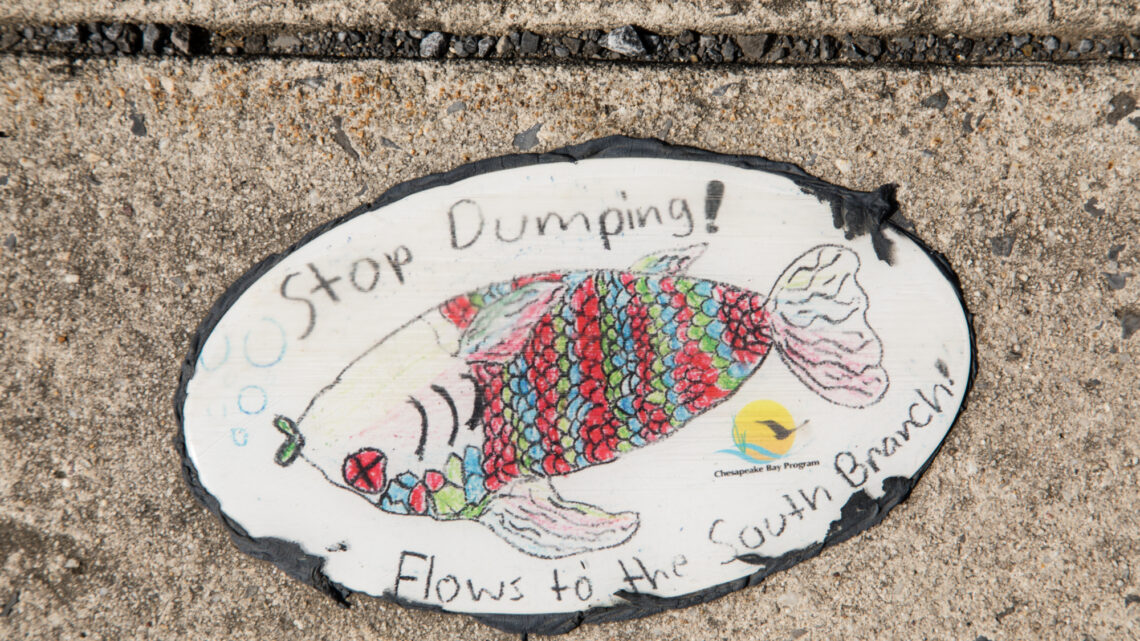Reduce and Clean Runoff

An increase in population and impervious surfaces has increased the amount of polluted runoff entering waterways.
Many of the major issues impacting the health of the Chesapeake Bay watershed involve the amount of runoff pollution entering the waterways. The ever-increasing population of the region has resulted in an increase of impervious surfaces, pollution, and chemical use which all contribute to polluted runoff.
Impervious surfaces are hard surfaces that do not allow water to pass through. As stormwater runs off these surfaces, it picks up pollutants and carries them to local waterways. These pollutants include fertilizers, pesticides, pharmaceuticals, and other chemical contaminants. In 2016, 82% of Chesapeake Bay tidal waters were partially or fully impaired by toxic contaminants. Litter and trash is another major contributor to runoff pollution. It is estimated that 80% of plastic litter in the ocean came from land through rivers and coasts.
Connecting to Issue Investigation
Student investigations of water quality, ecosystem health, and human impacts on local waterways can all lead students to discover the types of contaminants in the water and their sources. Actions to reduce or clean runoff can benefit local waterways and everything downstream.
For those working towards green school awards, this action can help reduce a school’s environmental impact if the school adapts practices to reduce contaminants used on land and/or install features to trap and clean runoff.
Facilitating Student Action
Students should continue to have opportunities to share ideas and opinions throughout the process of identifying, planning, and implementing action. Listed here are just a few ways students can stay engaged while working on this solution—but there are many more! The complexity of each activity/task can be adjusted for each grade level.
Restore - students can restore methods for reducing or cleaning runoff. Plantings near waterways or storm drains (like rain gardens) that clean runoff may need weeding and/or new plants. Or, a rain barrel system may need repairs.
Create - students can look for projects to install to reduce or clean runoff. Project complexity and size can differ based on student age. Students can get involved with implementation or their work can focus on getting the funds and permissions. Projects can range from creating rain gardens or infiltration basins, installing porous surfaces or green roofs, or connecting rain barrels.
Educate - students can educate the school administration and maintenance staff and the surrounding community on activities and products that pollute water. An education campaign will look different based on age. Students can paint storm drains, create flyers and posters, or present in front of decision makers and community members.
Advocate - students can advocate to the school board or administration for water-friendly practices on school grounds that reduce the amount of polluted water running off the property.
Monitor - students can test school runoff to inform future action or monitor the effectiveness of new practices.
Share and Celebrate - students can share their work with the school community by giving tours of the school’s practices to improve runoff, giving presentations, creating displays, or writing and delivering morning announcements. Students can also write articles, press releases or invite reporters from the school paper and the local newspaper.
Reduce and Clean Runoff Resources
The Chesapeake Stormwater Network hosts many resources on Stormwater Best Management Practices (BMPs). Click on the different pictures to review webinars and resources.
There are many Rain Garden resources out there. Check out the Rain Garden section (page 19) of Chesapeake Stormwater Network’s Homeowner Guide for a more Bay-friendly Property. The step-by-step guide includes great pictures. If you prefer videos, Maryland Sea Grant created videos on how to create a Rain Garden.
WikiWatershed is an interactive tool from the Stroud Water Research Center. Students can use the Runoff Simulation to learn how runoff changes with land cover. The Model My Watershed can be used to design BMPs and learn of their predicted impact on runoff. View the Model My Watershed guide to learn how to use the tool for your location.
